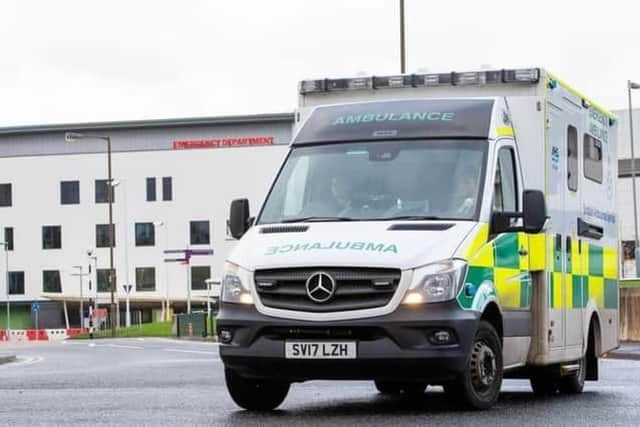Edinburgh crime: Edinburgh has most 'red flagged' addresses which are too dangerous for paramedics
and live on Freeview channel 276
More than 1,000 addresses in Edinburgh have been ‘red flagged’, meaning they have been deemed dangerous for ambulance crews to attend without police protection.
Data obtained by 1919 Magazine through a Freedom of Information request has shown that, as a whole, Edinburgh’s EH post code, which also covers most of the Lothian region, is the worst in the country for these dangerous addresses, with 1,122 properties having been red flagged. This has increased from 469 in 2018, a rise of more than 135 per cent.
Advertisement
Hide AdAdvertisement
Hide AdThree Edinburgh postcodes are in the five worst areas in Scotland, according to the figures. Across Scotland nearly 4,500 properties have been subjected to the Scottish Ambulance Service’s ‘red flag’ policy, an increase of 80 per cent from 2,500 in 2018.


The EH1 postcode, covering the centre of the Capital, has the most problem addresses with 173 homes or businesses listed. Ayrshire’s KA1 postcode – covering Kilmarnock and other villages – was second worst with 134. North Edinburgh’s EH4 zone ranked third with 125, PA1 in Paisley was fourth with 112, while EH5, covering northern parts of Edinburgh, came fifth with 105 addresses flagged. After Edinburgh, Glasgow and Ayrshire had the most problem addresses, with 885 in Greater Glasgow and 532 across Ayrshire.
Properties have been identified as dangerous following attacks, threats and verbal abuse during previous call outs. It means paramedics can only go in to respond to a 999 call there if they are accompanied by a police officer or when a risk assessment has been carried out.
But the biggest union for the ambulance service has warned that the number of properties is only ‘the tip of the iceberg’. According to the GMB union, police officers no longer attend every call out to red flagged homes and crews are told to do their own risk assessment.
Advertisement
Hide AdAdvertisement
Hide AdKaren Leonard, GMB Scotland organiser, said: “These figures should shock every Scot but will not surprise a single ambulance worker. The number of addresses where our members are at risk is far higher than those with red-flags while many of the most dangerous individuals may have moved and are at another address entirely. Our members arrive for work not knowing where they will be asked to attend or what they will face when they get there. They deserve every possible protection up to and including police escorts.”
GMB Scotland said police no longer attending the most dangerous addresses with ambulance crews is a cause of huge concern. But police chiefs said it would be ‘impossible to go to everything’.
Brian Jones, vice chair of the Scottish Police Federation, said: "We fully understand why ambulance crews won’t go to places if they think they’re going to be attacked. But the police are the service of last resort – we have no choice in the matter. In the near future there will come a point when a decision will have to be made about what we can’t go to, because it will be physically impossible to go to everything. These incidents just show how society is changing – and it is just another thing which is placing a demand on resource policing when things are getting tighter.”
An investigation earlier this year revealed ambulance workers in Scotland suffered almost 800 attacks in the line of duty over the last five years, including being spat at, bitten and sexually assaulted. The GMB Union has called for new legislation to “protect our protectors” by flagging offenders and offering more support for victims.
Advertisement
Hide AdAdvertisement
Hide AdA Scottish Ambulance Service spokesperson said: “Our staff should not fear for their safety when working, and these measures have been put in place to help protect them while they do their job. Individual addresses where previous incidents have occurred are automatically flagged to our crews, allowing staff to undertake dynamic risk assessments or if required request additional support. It is not correct to say that individual addresses are too dangerous or ‘no-go areas’. Our staff are trained in assessing risk and managing aggression so that they can make a sensible decision based on the circumstances. Getting to the sickest patients is always our priority."